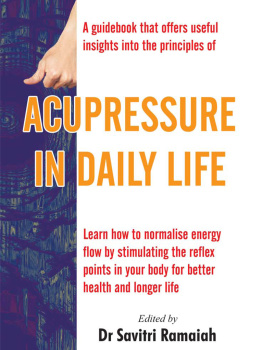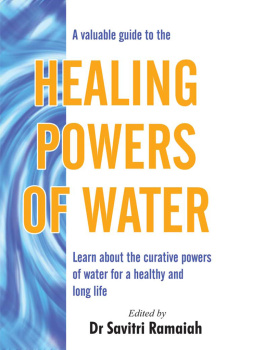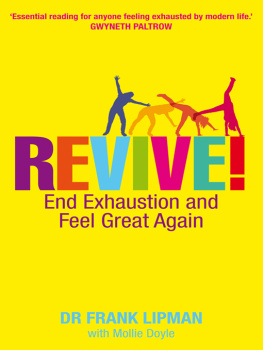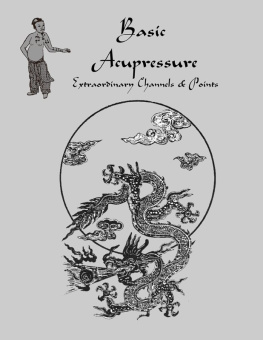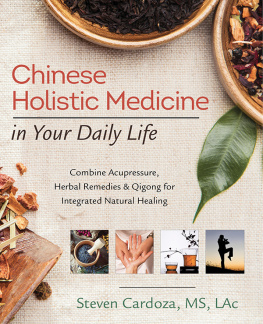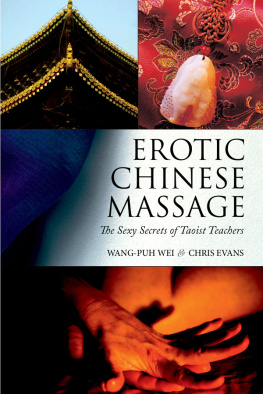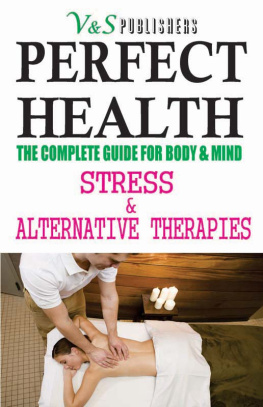Copyright
NEW DAWN
a division of Sterling Publishers (P) Ltd.
A-59, Okhla Industrial Area, New Delhi-110020
Ph.: 26387070, 26386209 Fax: 91-11-26383788
E-mail: ghai@nde.vsnl.net.in
Internet: http://www.sterlingpublishers.com
Acupressure in Daily Life
2003, Sterling Publishers Private Limited
ISBN 81 207 2638 3
All rights are reserved. No part of this publication may be reproduced,
stored in a retrieval system or transmitted, in any form or by any
means, mechanical, photocopying, recording or otherwise, without
prior written permission of the publisher.
Preface
All You Wanted to Know About is an easy-to-read reference series put together by Health Update and assisted by a team of medical experts who offer the latest perspectives on body health.
Each book in the series enhances your knowledge on a particular health issue. It makes you an active participant by giving multiple perspectives to choose fromallopathy, acupuncture, ayurveda, homoeopathy, nature cure and unani.
This book is intended as a home adviser but does not substitute a doctor.
The opinions are those of the contributors, and the publisher holds no responsibility.
Introduction
Acupressure is one of the oldest healing systems, and it has existed in India and the Orient for several centuries. For years this traditional drugless therapy was confined to few countries until the western countries, especially the United States of America, showed interest in developing and adapting acupressure.
Shiatsu of Japan, acupuncture of China, and hand and foot reflexology of the east, etc., are various forms of acupressure. All these techniques are based on stimulation of specific reflex points in the body in order to provide relief from pain or other ailments. Our bodies have remarkable self-healing energy forces which are used by natural and all other holistic sciences of healing such as nature cure, acupressure, acupuncture, etc.
The healing energies flow through the body in specific pathways called meridians. Each of these meridians have nerve centres and reflex points in various parts of the body. In acupuncture, needles are inserted into these nerve centres and reflex points, whereas in acupressure, the healers fingers apply pressure. Most of the reflex points where pressure is applied are located on the foot, hand, back, face, and the ears.
01. What Is Acupressure?
Acupressure is the process by which normal energy flow in the meridians is restored. Any obstruction or blockage in the flow of energy in the body on these meridians results in illhealth.
Tiny crystal-build-up on the nerve endings can also disrupt the proper flow of energy impulses.
This interruption in the energy flow causes pain at specific reflex points on the respective meridians.
When pressure is applied to these reflex points, they are stimulated and the blockage to energy flow is released. Relief follows the normalisation of the energy flow.
Every organ, and part of the body has a reflex point on the hands and feet.
A deviation in the normal functioning or a change in the structure of various organs of the body induces pain in their corresponding reflex points on the hands and feet.
Acupressure applied to the selected points in the feet and legs to cure ailments is called foot reflexology. Pressure therapy applied to the hand is called hand reflexology.
Some healers use reflex points on the ears, face, head and scalp for treatment. Most reflex points used in Shiatsu of Japan are located on the back, abdomen and limbs.
Acupressure can be used to diagnose various health problems. A reflex point, painful upon touch, may mean that the corresponding organ has an abnormal function or structure, or both.
This abnormality may reveal symptoms of a disease especially in its early stages.
By applying pressure to the painful reflex point, the normal functions and structures of the organs can be restored over a period of time.
02. Reflex Points On The Feet And Palm
Generally the location of reflex points corresponds to the location of the organ in the body.
The organs to the right have reflex points on the right hand and foot, and those to the left have reflex points on the other hand and foot.
Organs located on both sides (such as kidneys, eyes, ears, etc.) have reflex points on both feet and hands.
Acupressure theorists divide the body into ten equal vertical zones that run the length of the body from the top of the head to the tips of the toes and fingers.
Thus, there are five zones on the right and five on the left side of the body as shown in Figure 1.

Each toe or finger on the feet and hands respectively is a part of a specific zone.
The palms and feet are divided into four horizontal parts to represent four parts of the body as shown in Figures 2a and 2b.
- Fingers, thumb and webs correspond to the head area.
- End of fingers and toes up to their middle correspond to the chest area.
- Middle curved part of the foot and palm correspond to the abdomen and digestive organs.
- Heel area up to the ankle and the wrist correspond to the reproductive organs and lower limbs.
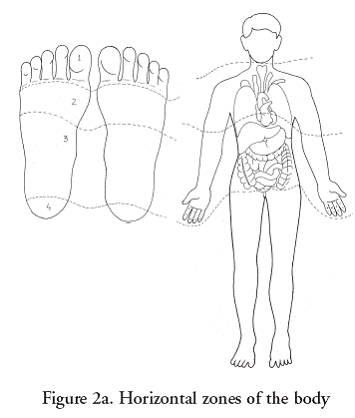
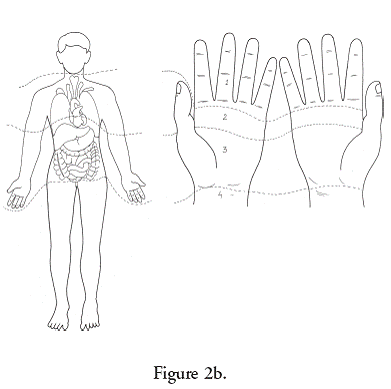
The outer side of the thumb or big toe correspond to the backbone. The outer sides of the little fingers correspond to the shoulder and knee areas.
The reflex points for various organs on the hands and the feet are as shown in Figures 3 (a and b) and 4 (a and b), respectively.
The reflex points of the face are illustrated in Figure 5.
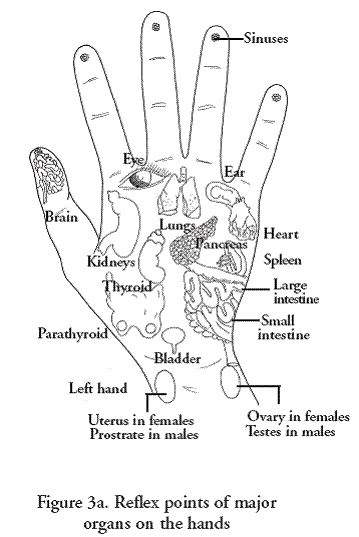
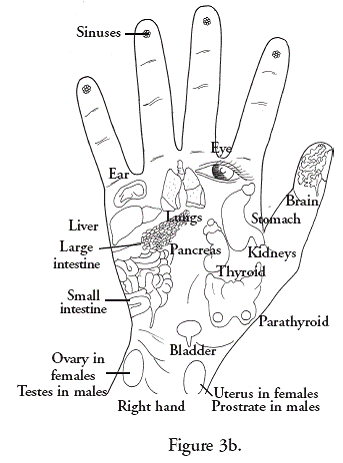
Paired organs such as eyes, ears, etc., have reflex points on both the hands. Single organs such as stomach, liver, spleen, etc., have reflex points on the corresponding hands. Whenever there is even minor abnormality in the structure or function of these organs, the corresponding reflex point will pain when you press it.
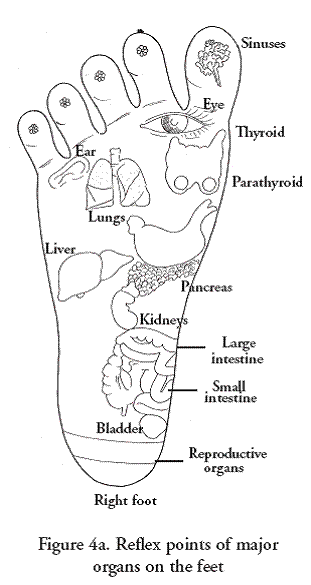
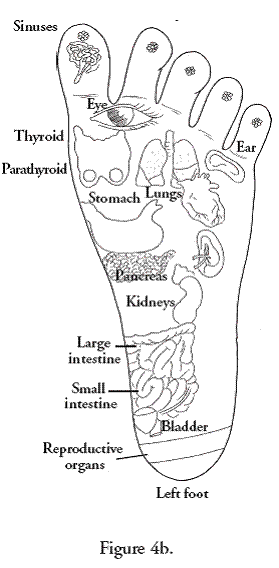
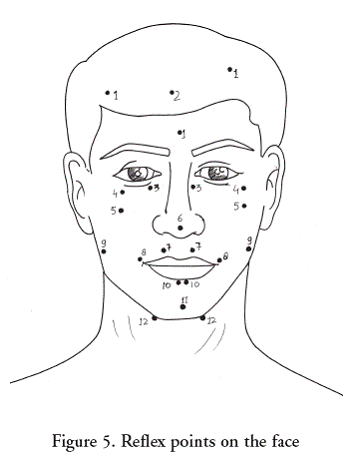
Benefits of reflexology of the face
- Increases mental energy.
- Regulates functions of vital organs and nerves.
- Regulates kidney functions.
- Corrects refractive errors.
- Regulates bowel movements.
- Improves digestion.
- Regulates functions of the spleen.
- Regulates lung functions.
- Regulates liver functions.

